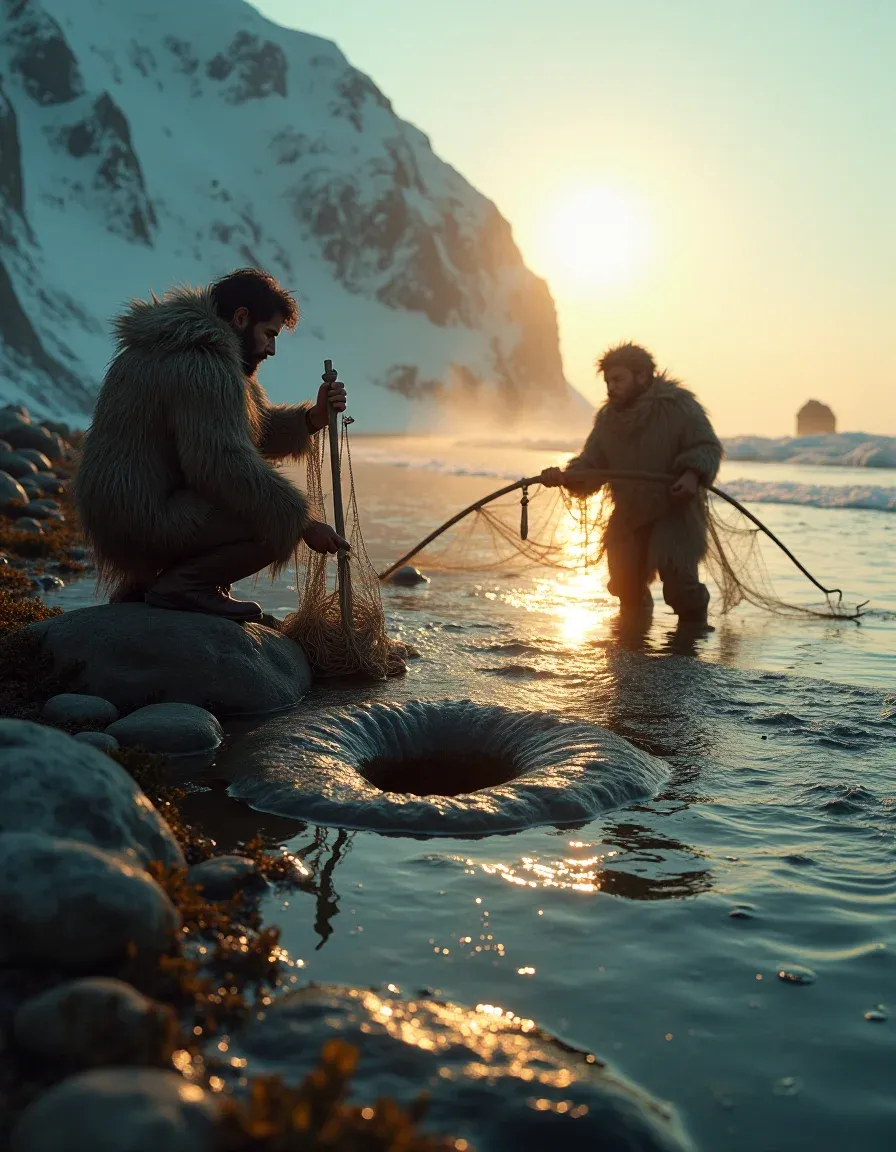Fishing the Ice Age: What Angling in the Pleistocene Might Have Felt Like
Imagine hauling a speared freshwater giant through a hole in the ice while bears circle the shoreline, Pleistocene fishing felt familiar but brutally raw, with simple gear, abundant fish, and real danger.

So you want to know what fishing would be like during the Pleistocene — the Ice Age stretch from about 2.6 million to 11,700 years ago. Short answer: familiar, raw, and sometimes brutal. The water’s the same. The rules are different.
Where you’d be casting
The Pleistocene wasn’t a single frozen world; it swung between glacial cold and warmer intervals. During peak glaciations sea levels were as much as 120 meters lower, revealing vast continental shelves and changing coastlines (Pleistocene — Wikipedia). You’d fish from exposed tidal flats, river mouths, glacial lakes, and under ice in northern regions. In short: if there was water, people fished it.
What you might catch
- Far more fish, in many places. People say ocean and river stocks were much fuller — no centuries of commercial overfishing yet.
- Familiar families of fish, but sometimes different species mixes. Deep, odd survivors like coelacanths were around in earlier ages and are a reminder that strange survivors exist (Coelacanth — Wikipedia).
- Large freshwater fish and megafauna-influenced ecosystems. Some now-extinct species may have played roles in food webs we no longer see.
How you’d catch them
You won’t be tying on braided line. Expect technology like bone hooks, carved harpoons, woven nets and baskets, spears, and traps. Nets and baskets could be incredibly effective. In colder stretches, ice-fishing was real — holes in the ice, simple lures or spears. Some people point out that without nylon and modern tackle, fishing felt more physical and communal.
Risks, drama, and wildlife
This wasn’t a peaceful weekend morning. You’d share shorelines with big predators — bears, giant birds, maybe crocodylian relatives in warmer places. Rivers could hide very large fish and sharks in coastal zones. People warn: it’s more ‘River Monsters’ than Instagram cast-and-release.
If you could try it today
- Think low-tech: learn hand-line, spear, and net basics.
- Respect the environment — ecosystems were intact then; ours often aren’t.
- Read up on archaeology — fish bones at ancient sites show how humans adapted to varied water worlds.
In short: Pleistocene fishing would feel familiar but raw — a lot more fish in many places, simpler gear, different risks, and radically different shorelines depending on the ice. Want to nerd out further? Start with the Pleistocene and coelacanth pages on Wikipedia to see how big the differences might be: Pleistocene · Coelacanth.




